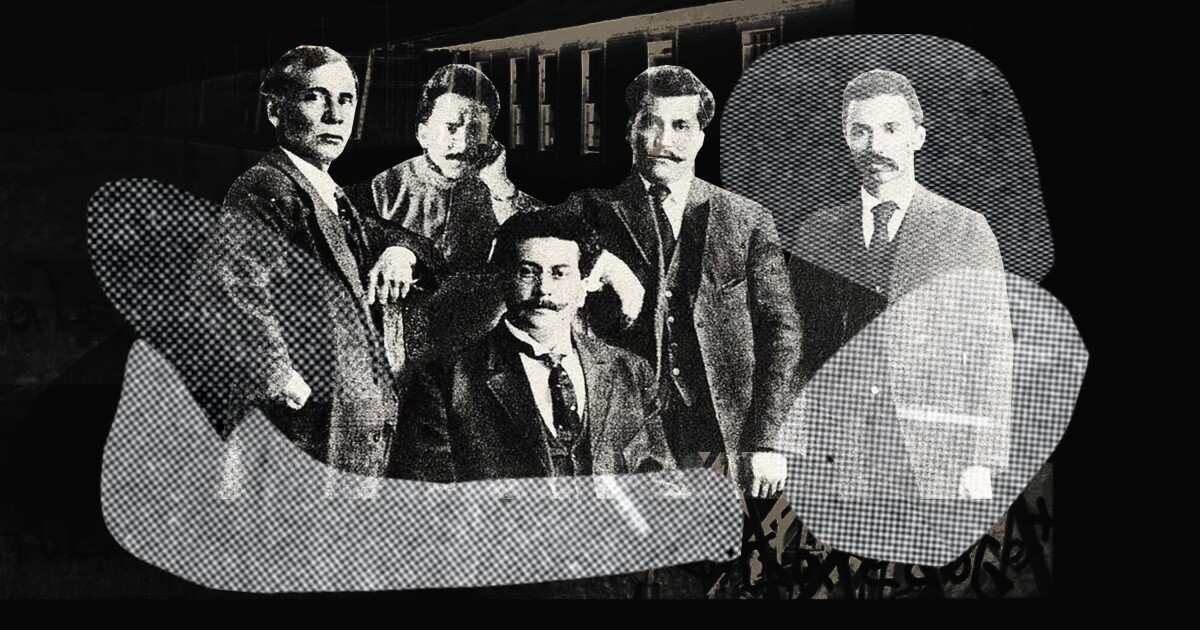[ad_1]
Women’s International Thought: A New History
Edited by Patricia Owens and Katharina Rietzler
Cambridge University Press, 2021
Remembering
Women’s International Thought: A New History adds to conversations about the critical re-examination of the International Relations canon in both recovery of marginalised content and ontological and epistemological interventions. It gives readers insight into the diversity of ideas that early twentieth century women contributed to international thought, many of which have been relegated to the proverbial cutting room floor. The authors acknowledge that ‘women’ is a deeply contested category, complicated by intersections with other identities and categories (Owens and Rietzler 2021, pp.4–5) and this enriches their analysis. This edited volume includes chapters on eighteen thinkers, with the chapter authors exploring archives, speeches, teaching, street-strolling, activism, and even early aviation to document the marginalised international thought and theory of women. The book also fundamentally challenges existing conceptions of what constitutes the material our canon ‘should’ encompass.
The book is part of the Women and History of International Thought (WHIT) project that adds to and enlivens an outpouring of work explicitly challenging the gender boundaries of the IR canon (Ashworth 2011; Stockmann 2017; Hansen 2011). It is in good company alongside similar endeavours such as that of Robert Vitalis (2015) and others (Shilliam 2011; Anievas, Manchanda, and Shilliam 2015) focusing on Black and non-Western scholarship. Like these interventions, Women’s International Thought carefully considers the boundaries of the IR canon, acknowledging that sometimes it is the marginalisation of particular thinkers that results in a narrowing of ‘relevant’ topics, rather than the other way around. Consequently, the editors and chapter authors offer us an opportunity to expand both the lore (or stories) of IR and the folk (or experts) of IR that makes up our discipline’s canon (Starnes 2021). While conversations remain about how we restructure our concept of canon for the future, this book represents an excellent resource for those who want to uncover historical marginalisation and epistemic violence and to explore the content and scope of previously marginalised work.
A shortcut to lost archives
While Patricia Owens (2018) methodically documented the absence of women’s international thought in a variety of canonical texts, engaging with a lack of citations and mentions merely alerts (or reminds) readers of women’s absence. Although valuable, this leaves many wondering what (if anything) women had to say about the international. In this volume, we are introduced to the varied thought that early and mid-20th century women contributed to a variety of fora confirming that not only did women have things to say but that they said them and, in many cases, had significant influence on the development of contemporary international thought. Rather than presenting readers with stripped back accounts of thought that fit the narrow confines of ‘scholarship’, each chapter gives the reader a sense of the woman (or women) who produced the thought, the people she worked with and talked to and how she shared her ideas. The effect of this is multifaceted, supporting the editors’ aim to “invite readers to adopt a broader understanding of what it means to produce thought and theory” (Owens and Rietzler 2021, p.5), diversifying the kinds of thought we pay attention to, adding to the readability of the book, and challenging who we think produces international thought. One potentially surprising consequence is a reflection of the diversity of women’s international thought. While some may be familiar with women’s activism in the peace movement (Ashworth 2011), or have encountered Merze Tate’s work on collective security (Vitalis 2015), the technologically inspired optimism of Elizabeth Lippincott McQueen’s focus on the possibilities of interconnectivity through aviation is less familiar. Lippincott McQueen’s belief that flying would diminish barriers and help to forge friendship, trade and interest between nations emphasized a technological solution to serious threats to security. While aviation may no longer hold this promise, Lippincott McQueen’s ideas have contemporary resonance with the possibilities and pitfalls of technological solutions to global issues like climate change.
Readers may also be unfamiliar with Amy Ashwood Garvey’s thought. Amy Ashwood’s understanding of Pan-Africanism and her work on black liberation informed her efforts to advance women as leaders, often through speeches and travel. Robbie Shilliam’s chapter on Amy Ashwood touches on how much of her thought was not formally recorded via publication or speech recordings, but he also explores how her lifestyle and relationships played into her work’s dismissal. A similar theme emerges in Blain’s discussion of Mittie Maude Lena Gordon, whose work as a street-scholar lacked the underpinnings of formal education that so often function as a bouncer at the gates of ‘scholarship.’ Nevertheless, Gordon’s leadership in Black Nationalism and her advocacy of Afro-Asian solidarity as an explicitly anti-colonial strategy was a radical position and important in 20th century black political discourse. Blain and Shilliam both touch on wider issues of class and respectability, exploring why some Black scholars’ work has been the focus of recent recovery efforts, while others remain at the margins in spite of their influential and unique ideas.
Even those women who may be familiar because of these recent efforts, like Tate and Simone Weil, are given dedicated exegesis, with their international thought at the fore. We thus get a new take on their work. Reflections on Weil’s status as a ‘pariah’ and a focus on her eccentric way of living often overshadow her work, revealing the link between her dismissal and refusal to engage with colonial legacies. We see that it is both her person and her ideas that are marginalised. Weil’s focus on colonialism is still neglected in considerations of power and aggression (Owens and Rietzler 2021, pp.73–74). The emphasis Weil placed on centring colonialism and her ability to link colonialism to totalitarianism allows for a richer understanding of the many ways that power and aggression can manifest.
Focusing on the early to mid-20th century is revealing because it encompasses the nascent discipline of International Relations and the subsequent narrowing of the subject that accompanied it into the mid-20th century. Many of the women featured explore themes of imperialism and colonialism, as Weil did. In the case of Eslanda Robeson’s post 1945 international thought that linked human and international relations, tracing the marginalisation of her thought shows us the systematic marginalisation of international thought that considered race, gender, imperialism and colonialism, work often undertaken by those themselves at some sort of margin. This also emphasises the intimate link between who and what is allowed in the sphere of producing international thought and how gendered, raced and imperialist boundaries are written into what counts as the ‘IR’ that is studied and reiterated, legitimising and naturalising these silences and silencing practices.
Recovery isn’t enough
While it is tempting to take each woman’s contribution in turn and distil it into themes we map onto ‘the canon’, I have attempted to focus on the broader point of how this diverse and apposite international thought has been dismissed. My reasons for this are two-fold. First, the book explicitly and successfully aims to avoid a project of ‘recovery’ in which this scholarship is held up against our contemporary ideas of international thought as additions, without thinking through the “exclusions and hierarchies congenital to canons of IR theory” (Owens and Rietzler 2021, p.160). It is my intention to highlight this success, rather than undermining it by exploring what such a recovery adds to an otherwise intact canon. The second reason is that it allows me to focus on the book’s (and the WHIT project’s) contribution to conversations about how international relations engages with canon (re)formation as a political endeavour (Hutchings et al. 2022). Exclusion is never so simple as writing out based on race, gender, class or any other category. It is always dressed up. Dressed up as ‘relevance,’ ‘legitimacy,’ ‘rigour’. This disguise helps it to persist. To account for this absence merely along gender lines is to miss the myriad mechanisms of writing out, that we reiterate in our contemporary writing, even when ‘gender aware’. It misses the link between the folk and the lore that shapes our canon unnoticed. A strength of the book is that the chapter authors delve into questions of respectability, the divide between activism and theory, journalism and academic writing, and the sticky question of where, how, and through what intricate means scholarship on race, imperialism and gender was erased from both IR’s accounts of disciplinary history and from those features considered to be ontological. They show us that the who and the what of the canon are linked.
Bibliography
Anievas, Alexander, Nivi Manchanda, and Robbie Shilliam, eds. 2015. Race and Racism in International Relations: Confronting the Global Colour Line. Abingdon: Routledge.
Ashworth, Lucian M. 2011. “Feminism, War and the Prospects for Peace.” International Feminist Journal of Politics 13 (1): 25–43.
Hansen, Lene. 2011. “A Research Agenda on Feminist Texts and the Gendered Constitution of International Politics in Rebecca West’s Black Lamb and Gray Falcon.” Millennium: Journal of International Studies 40 (1): 109–28.
Hutchings, Kimberly, Sarah Dunstan, Patricia Owens, Katharina Rietzler, Anne Phillips, Catherine Lu, Christopher J. Finlay, and Manjeet Ramgotra. 2022. “On Canons and Question Marks: The Work of Women’s International Thought.” Contemporary Political Theory 21 (1): 114–41.
Owens, Patricia. 2018. “Women and the History of International Thought.” International Studies Quarterly, no. 0: 1–15.
Owens, Patricia, and Katharina Rietzler, eds. 2021. Women’s International Thought: A New History. Cambridge: Cambridge University Press.
Shilliam, R., ed. 2011. International Relations and Non-Western Thought. Abingdon: Routledge.
Starnes, Kathryn. 2021. “The Case for Creative Folklore in Pedagogical Practice.” Art & the Public Sphere 10 (2): 225–32.
Stockmann, Jan. 2017. “Women, Wars, and World Affairs: Recovering Feminist International Relations.” Review of International Studies 44 (2): 215–35.
Vitalis, Robert. 2015. White World Order, Black Power Politics: The Birth of American International Relations. London: Cornell University Press.
Further Reading on E-International Relations
[ad_2]
Source link













